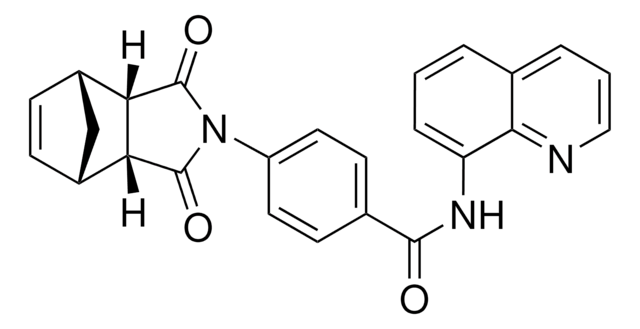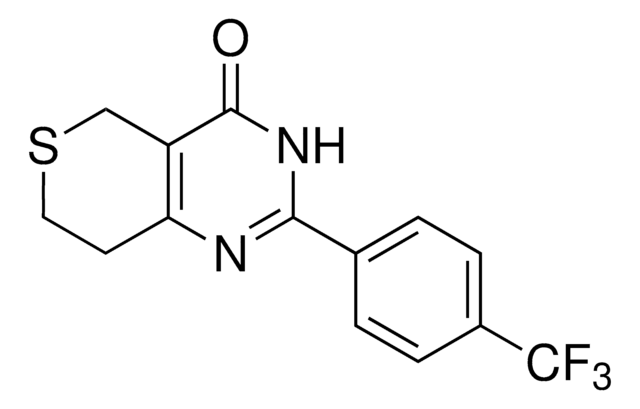SRP0100
HDAC-1 human
recombinant, expressed in baculovirus infected insect cells, ≥50% (SDS-PAGE)
Synonym(s):
HD1, Histone deacetylase 1
Sign Into View Organizational & Contract Pricing
All Photos(1)
About This Item
UNSPSC Code:
12352200
NACRES:
NA.32
Recommended Products
biological source
human
recombinant
expressed in baculovirus infected insect cells
assay
≥50% (SDS-PAGE)
form
aqueous solution
mol wt
56 kDa
packaging
pkg of 50 μg
storage condition
avoid repeated freeze/thaw cycles
concentration
>0.02 mg/mL
NCBI accession no.
UniProt accession no.
shipped in
dry ice
storage temp.
−70°C
Gene Information
human ... HDAC1(3065)
General description
Human HDAC1, GenBank Accession No. NM_004964, full length with C-terminal HIS-DDDDK tag (FLAG) and C-terminal His-tag, MW = 56 kDa, expressed in baculovirus expression system.
Biochem/physiol Actions
Useful for the study of enzyme kinetics, screening inhibitors.
Unit Definition
One unit is defined as the amount of enzyme required to deacetylate 1 pmol of substrate/min at 37°C.
Physical form
Formulated in 25 mM Tris-HCl, pH 8.0, 130 mM NaCl, 0.05% Tween-20, 100 μg/ml FLAG peptide and 10% glycerol.
Preparation Note
Thaw on ice. Upon first thaw, briefly spin tube containing enzyme to recover full content of the tube. Aliquot enzyme into single use aliquots. Store remaining undiluted enzyme in aliquots at -70°C. Note: Enzyme is very sensitive to freeze/thaw cycles.
Storage Class
12 - Non Combustible Liquids
wgk_germany
WGK 3
flash_point_f
Not applicable
flash_point_c
Not applicable
Certificates of Analysis (COA)
Search for Certificates of Analysis (COA) by entering the products Lot/Batch Number. Lot and Batch Numbers can be found on a product’s label following the words ‘Lot’ or ‘Batch’.
Already Own This Product?
Find documentation for the products that you have recently purchased in the Document Library.
Laura De Clerck et al.
Molecular omics, 17(6), 929-938 (2021-09-16)
Histone-based chromatin organization paved the way for eukaryotic genome complexity. Because of their key role in information management, the histone posttranslational modifications (hPTM), which mediate their function, have evolved into an alphabet that has more letters than there are amino
Our team of scientists has experience in all areas of research including Life Science, Material Science, Chemical Synthesis, Chromatography, Analytical and many others.
Contact Technical Service








